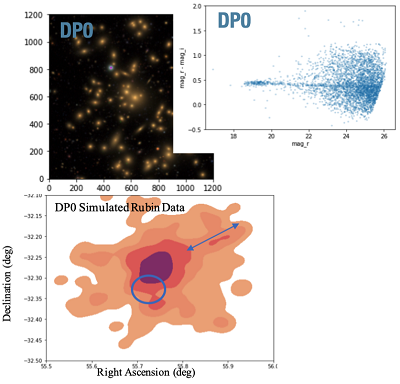Past Events
Setting Experimental Bounds on Entangled Two-Photon Absorption Cross Sections
Entangled two-photon absorption (E2PA) is a process in which entangled photon pairs are used instead of a pulsed laser to excite a two-photon transition. The correlation of these photons in time and space may improve the excitation efficiency. In this work, we develop experimental apparatuses that enable sensitive measurements of E2PA via both transmittance and fluorescence-based schemes. We show strong evidence that E2PA cross sections are several orders of magnitude lower than many prior reports claimed.
Symmetric Mass Generation
Lunch will be provided at 12:00pm, so please come early to eat mingle and eat lunch before the talk begins.
Abstract:
Characterizing Quantum Devices Using the Principles of Quantum Information
Abstract: The past few decades have born out exquisite improvements in the control of quantum systems, with quantum computing and quantum metrology at the forefront. It has therefore become essential to design methodologies for assessing the performance of these devices. Unsurprisingly, the field of quantum information has already paved the way forward.
TBA
Lab Website: https://www.greiderlab.org/
Synopsis: The Greider lab uses human and yeast cells to study the mechanisms that establish and regulate telomere length. The lab has covered a variety of research related to telomeres with recent publications focusing on telomere terminal transferase activity and telomerase activity.
===========
JSCBB A115 Butcher Auditorium
Jennie Smoly Caruthers Biotechnology Building (JSCBB)
3415 Colorado Ave.
Boulder, CO 80303
Investigation of Bulk Acoustic Phonons for Quantum Memory Applications
The next CU Phonon Club seminar of the semester will be held on 3/22. Please join us for a great talk, interesting discussion, and FREE FOOD! Hope to see you there! Additionally, if anyone is interested in being involved in the organization of CU Phonon Club, please email: emma.nelson-1@colorado.edu.
TBA
Can the tail wag the dog? The influence of micro-instabilities on collisionless plasma shocks.
Abstract: Collisionless shocks are ubiquitous and hugely important in space and astrophysical plasmas. In hot and rarified (weakly collisional) plasma, the energy dissipation necessary for such a shock to exist must be provided by kinetic processes, among which plasma instabilities have long been considered primary candidates.
Universal quantum correlations with reduced density matrices
Strong quantum correlations lie in the center of many fascinating physical phenomena, as for instance quantum phase transitions. A direct way to study quantum correlations in many body systems is to compute certain observables with the respective wave function. Yet, it is known that reduced density matrices are able to describe and predict directly the bulk of physical features of such quantum phenomena, overcoming the curse of dimensionality of wave-function-based theories.




